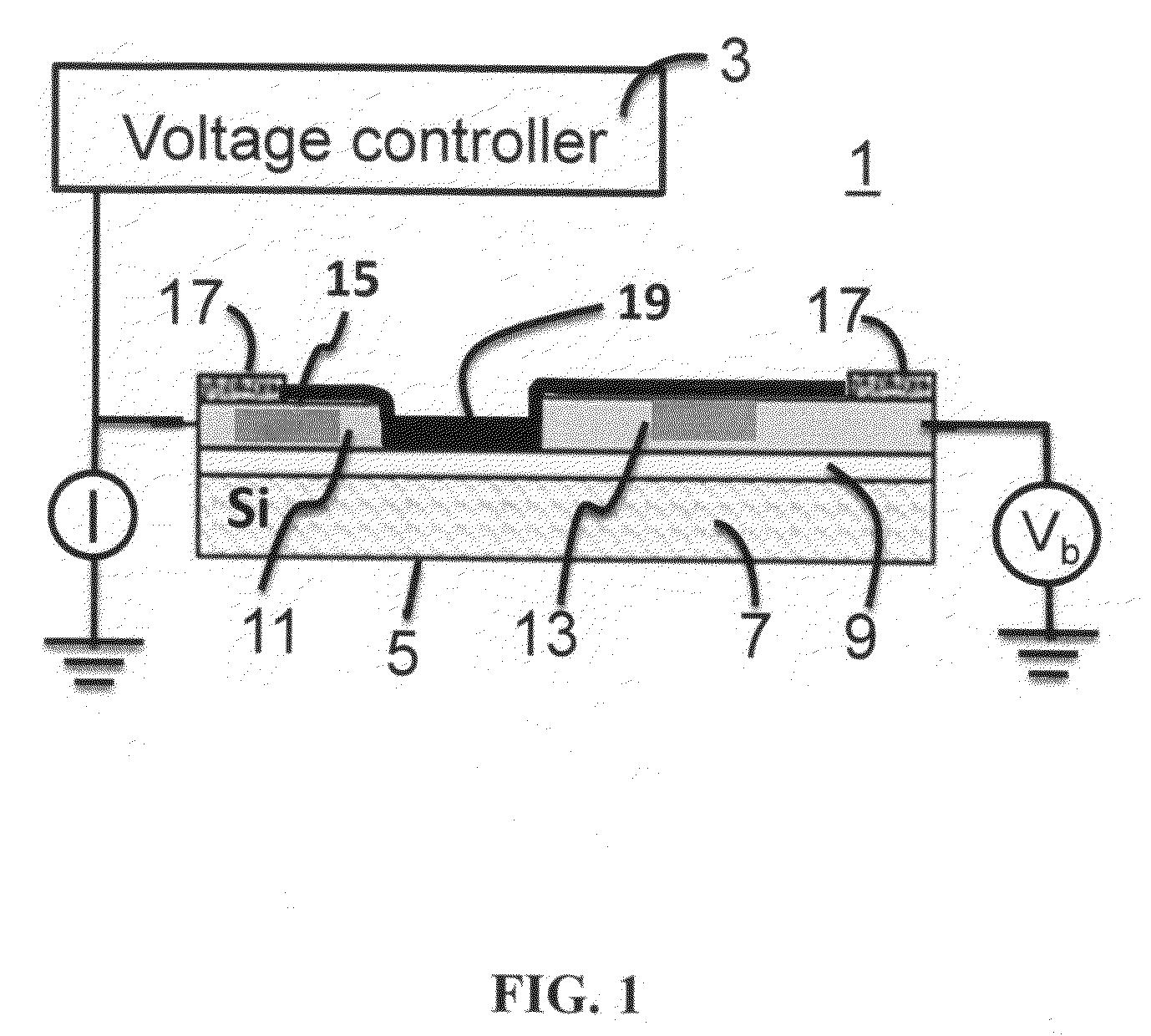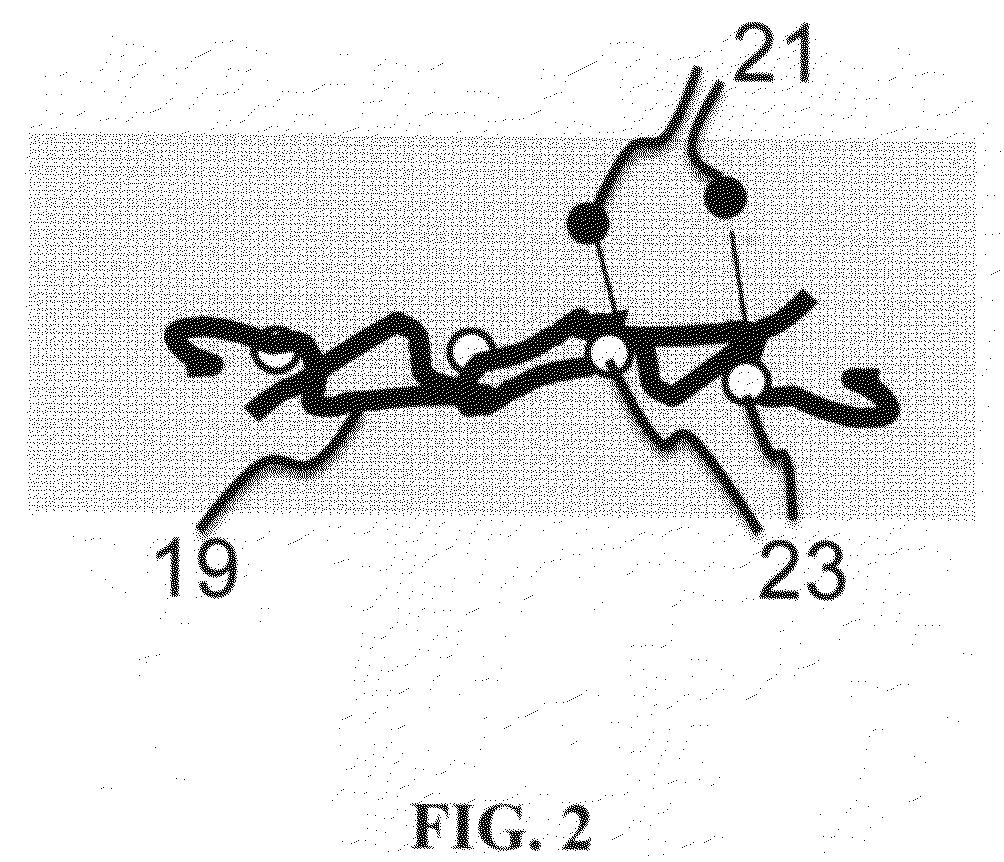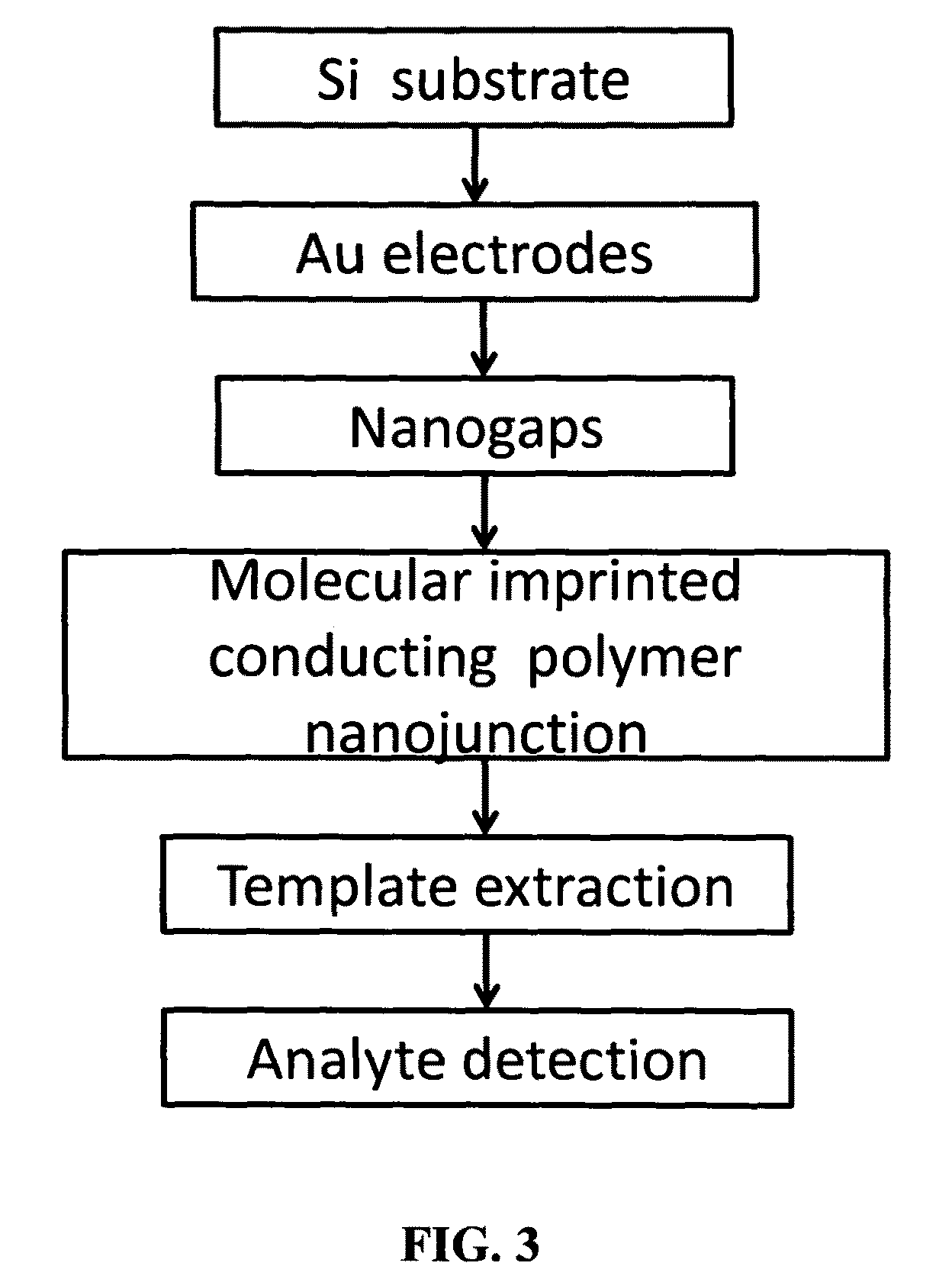Molecular imprinted nanosensors and process for producing same
a nanosensor and nanotechnology, applied in the field of molecular recognition sensor system and process of making same, can solve the problems of long response time of molecular imprinted polymer films, complex process of forming polymer, limited sensitivity of film sensors, etc., and achieve high sensitivity
- Summary
- Abstract
- Description
- Claims
- Application Information
AI Technical Summary
Benefits of technology
Problems solved by technology
Method used
Image
Examples
example 1
[0090]Volatile organic compound o-xylene was imprinted and detected with molecular imprinted nanosensor. A gold nanogap was first achieved by electrochemically depositing gold materials onto the gold pair of electrodes separated by a 1 μm gap. This nanogap was then bridged with polyaniline copolymer by cycling electrode potential in a solution containing 24 mM regular aniline, 24 mM self-doped aniline (3-aminobenzoic acid), 0.5M sulfuric acid as supporting electrolyte and 800 ppm o-xylene as the target analyte molecule. After formation of the molecular imprinted nanosensor, the analyte molecules were then extracted by cycling the electrode in an analyte free sulfuric acid (0.1M) and detection solution. During the cycling, the solution was replaced for 3-6 times until the current of the nanosensor was stabilized.
[0091]O-xylene was then detected in pH 6.5 solution. Upon exposure to 32 ppb o-xylene, a distinct decrease occurred in the peak current of the sensor. With the concentration ...
example 2
[0092]Detection of a chemical nerve agent simulant, DMMP (Dimethyl methylphosphonate) was demonstrated with DMMP-imprinted nanosensor (solid squares in FIG. 5). The experimental conditions are the same as in EXAMPLE 1, except the template molecules are DMMP in this case. In order to prove that molecular imprinted nanosensor does provide specific binding sites of the analytes, the response of non-imprinted nanosensor to DMMP is also shown in FIG. 5 (solid triangulars). Compared to DMMP-imprinted nanosensor, non-imprinted nanosensor has almost no response to DMMP. Further, DMMP-imprinted nanosensor is sensitive to DMMP, but has no response to PMP (Pinacolyl methyl phosphonate), even the two molecules are very similar on molecular structures, which indicates the great selectivity of our molecular imprinted nanosensor. This work demonstrated that molecular imprinted nanosensor is capable for the detection of toxic organic phosphate chemical nerve agents.
PUM
| Property | Measurement | Unit |
|---|---|---|
| area | aaaaa | aaaaa |
| size | aaaaa | aaaaa |
| size | aaaaa | aaaaa |
Abstract
Description
Claims
Application Information
 Login to View More
Login to View More - R&D
- Intellectual Property
- Life Sciences
- Materials
- Tech Scout
- Unparalleled Data Quality
- Higher Quality Content
- 60% Fewer Hallucinations
Browse by: Latest US Patents, China's latest patents, Technical Efficacy Thesaurus, Application Domain, Technology Topic, Popular Technical Reports.
© 2025 PatSnap. All rights reserved.Legal|Privacy policy|Modern Slavery Act Transparency Statement|Sitemap|About US| Contact US: help@patsnap.com



